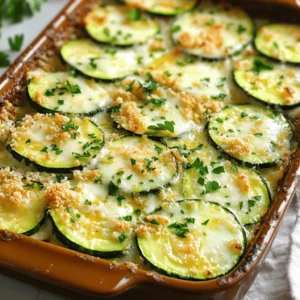- Chocolate Covered Cherries with Pistachio Dust Delight
- Peach Plum Crumble Bars Irresistible Sweet Treat
- Avocado Dill Hummus Board Fresh and Flavorful Delight
- Blueberry Lemonade Float Refreshing Summer Drink
- Grilled Watermelon Halloumi Skewers Savory and Fresh
- Watercolor Buttercream Cupcakes Delightful Recipe Guide
- Charred Corn Tomato Pasta Flavorful and Simple Meal
- Viral TikTok Salmon Rice Bowl Easy and Flavorful Recipe
- Easy Sheet Pan Fajitas with Flavorful Twist
- One-Pot Chicken Alfredo Creamy Comfort Dish
- Cheesy Broccoli Rice Casserole Comfort Food Delight
- One-Pan Honey Garlic Salmon Quick and Tasty Recipe
- Lemon Herb Grilled Chicken Delightfully Simple Recipe
- Garlic Butter Shrimp Pasta Rich and Savory Delight
- No-Bake Peach Icebox Cake Simple and Refreshing Treat
- Simple Yellow Squash Curry Flavorful Home Dish
- Easy Sauteed Yellow Squash Healthy and Simple Recipe
- Healthy Summer Squash Casserole Easy and Tasty Dish
- Quick Pickled Okra Flavorful and Simple Recipe
- The Best Zucchini Bread Irresistible and Easy Recipe
- Easy Cheesy Zucchini Bake Simple and Delicious Dish
- Cheesy Zucchini Casserole Delightful and Easy Recipe
- Peach Cobbler Pancakes Delicious and Simple Recipe
- Creamy Cheesy Zucchini Casserole Simple and Delicious
- Chicken Shawarma with Garlic Mayo Flavorful Recipe
- Olive Oil Zucchini Bread Moist and Flavorful Recipe
- Fig and Walnut Bars Healthy and Flavorful Snack
- Stuffed Yellow Squash with Beef Flavorful Recipe
- Zucchini Orange Bread Delightful and Easy to Bake
- Quick Refrigerator Pickles Tangy and Flavorful Delight
- Zucchini Brownies for Kids Healthy and Tasty Delight
- Squash and Corn Summer Skillet Fresh and Flavorful Dish
- Cucumber Feta Salad Fresh and Flavorful Delight
- Apple Zucchini Bread Irresistibly Moist Delight
- Easy Frittata Simple and Tasty Egg Dish Recipe
- Zucchini and Feta Frittata Delicious Simple Recipe
- Peach Cobbler Cheesecake Delightful Flavor Awaits
- Cheesy Zucchini Fritters Crispy and Flavorful Recipe
- Pineapple Cucumber Salad Fresh and Flavorful Recipe
- Herb Zucchini Casserole Flavorful and Easy Recipe
- Zucchini Potato Casserole Comforting and Flavorful Dish
- Garlic Butter Zucchini Casserole Tasty Comfort Dish

![- 12 fresh cherries with stems - 50g pistachios, shelled and unsalted - 200g dark chocolate (70% cocoa) - 1 tablespoon coconut oil - Optional: 1 teaspoon vanilla extract - Sea salt, for sprinkling I love using fresh ingredients for this recipe. The cherries need their stems for a nice look. When you bite into them, the juicy fruit mixes with the rich chocolate. It’s a perfect match. Pistachios add a nice green color and a crunchy texture. You can find shelled and unsalted pistachios at most stores. They blend well with the sweet cherries. For the chocolate, I recommend dark chocolate with at least 70% cocoa. It has a rich taste that balances the sweetness of the cherries. The coconut oil makes the chocolate melt smooth and shiny. If you want extra flavor, add a teaspoon of vanilla extract. It makes a big difference! Lastly, a sprinkle of sea salt brings out all the flavors. It creates a nice contrast with the sweet chocolate and cherries. This recipe is simple but feels fancy. You can find the full recipe to dive deeper into the steps and tips. 1. Start by rinsing your cherries under cool water. Make sure to dry them well with a paper towel. This step is key. If they are wet, the chocolate won’t stick properly. 2. Next, melt the dark chocolate and coconut oil. Use a small saucepan over low heat. Stir continuously until the mixture is smooth. If you want, add a teaspoon of vanilla extract for added flavor. 1. While the chocolate melts, prepare your pistachio dust. Place shelled and unsalted pistachios into a food processor. Pulse them until they reach a fine crumb consistency. Be careful not to turn them into a paste. 2. Once the chocolate is melted, remove it from the heat. Dip each cherry into the warm chocolate. Make sure it is fully coated. Use a fork to lift it out and gently tap to remove extra chocolate. 1. Immediately after coating, sprinkle the melted chocolate cherries with pistachio dust and a pinch of sea salt. This adds a nice contrast to the sweetness. 2. Place the chocolate-coated cherries on a parchment-lined baking sheet. Repeat the process until all cherries are coated. 3. Finally, refrigerate the cherries for 30 minutes. This helps the chocolate set completely. For the complete recipe, check the [Full Recipe]. To get the best chocolate coating, start with dry cherries. Any moisture can ruin the chocolate. I always rinse my cherries and pat them completely dry. This step is key for a smooth finish. Next, use quality dark chocolate. I recommend chocolate with at least 70% cocoa. This chocolate has rich flavor and melts well. It ensures a delicious bite with every taste. For a stunning presentation, arrange the cherries on a nice serving platter. You can add a sprinkle of crushed pistachios for color and flair. A light dusting of sea salt makes them pop. It adds a savory touch. Pair these treats with drinks like red wine or champagne. The sweetness of the cherries and chocolate works well with these beverages. You can also serve them with herbal tea for a cozy afternoon treat. For more details, check out the Full Recipe. {{image_2}} You can change the flavor of your chocolate-covered cherries easily. Try using milk chocolate or white chocolate instead of dark chocolate. Milk chocolate will give a sweeter taste, while white chocolate adds a creamy touch. You can also spice things up! Adding a pinch of cinnamon gives warmth, while chili powder adds a fun kick. These small changes make a big difference. If you want to switch up the nuts, you can. Use almonds or walnuts instead of pistachios. Almonds will add a nice crunch and a slightly sweet flavor. Walnuts have a rich, earthy taste that works well with chocolate. Don’t be afraid to experiment with different nuts to find your favorite combination. Seasonal fruits can add exciting flavors to your chocolate-covered cherries. For example, in summer, try adding fresh strawberries or raspberries. In fall, consider apple slices or pear chunks. The fruit juices mix with the chocolate and create a fresh taste. This way, you can enjoy different flavors all year long. For a detailed guide on making these treats, check out the Full Recipe. To keep your chocolate-covered cherries fresh, store them in the fridge. Place them in an airtight container. This keeps moisture out and preserves the texture. If you can, separate layers with parchment paper. This stops them from sticking together. Make sure to eat them within a week. The chocolate may lose its shine over time but will still taste great. Keeping them cold helps the chocolate stay firm and delicious. You can freeze chocolate-covered cherries for longer storage. First, place them in a single layer on a baking sheet. Freeze them until solid. Then, transfer the frozen cherries to a freezer-safe bag. This way, they won’t clump together. When you want to enjoy them, simply take out the desired amount. Let them thaw in the fridge for a few hours. This helps maintain the texture and flavor. Avoid thawing them at room temperature, as it can make the chocolate too soft. Enjoy your treat! You can follow this easy method to make chocolate-covered cherries. First, rinse and dry 12 fresh cherries with stems. For the chocolate, melt 200g of dark chocolate (70% cocoa) with 1 tablespoon of coconut oil. Once smooth, dip each cherry into the warm chocolate. Tap off the extra and sprinkle with pistachio dust. Chill them for 30 minutes to set. For more details, check out the [Full Recipe]. Yes, you can! Dark chocolate gives a rich taste, but you can use milk chocolate or white chocolate too. Each type brings its own flavor. Milk chocolate adds sweetness, while white chocolate gives a creamy touch. You can even mix chocolates for a unique taste. Just remember to adjust the melting times, as different chocolates behave differently. Chocolate-covered cherries last about 5 days in the fridge. Store them in a sealed container. This will help keep them fresh. If you want to keep them longer, consider freezing them. Just remember to thaw them before serving. This way, you can enjoy your tasty treat even later! In this post, we covered how to make delicious chocolate-covered cherries. We explored fresh ingredients, step-by-step instructions, tips, and storage options. You can customize your treats with different chocolates and nuts for unique flavors. Remember, quality ingredients shine in this simple recipe. Enjoy experimenting with seasonal fruits or spices to make your cherries truly your own. These sweet bites will impress any guest and satisfy your cravings. Make sure to share your creations!](https://mysavedrecipe.com/wp-content/uploads/2025/07/2fc20a3e-3e7e-488b-a264-5aaea3539e07-300x300.webp)
![- 2 cups ripe peaches, diced - 2 cups ripe plums, diced - ½ cup granulated sugar - ½ cup brown sugar, packed - 1 tablespoon lemon juice - ½ teaspoon vanilla extract - 1 teaspoon cornstarch - 1 ½ cups all-purpose flour - ½ cup rolled oats - ½ teaspoon baking powder - ½ teaspoon salt - ½ cup cold unsalted butter, cubed - 1 large egg I love using ripe peaches and plums for this recipe. They add a sweet and tangy flavor. The sugars balance the fruits' tartness, creating a delicious filling. A touch of lemon juice brightens the fruit and keeps it fresh. The vanilla extract enhances the overall flavor, making it even more inviting. For the crust and topping, all-purpose flour and rolled oats create a perfect crumbly texture. The baking powder helps the crust rise, while the salt enhances the flavors. Cold butter is key. It ensures the topping is light and flaky. Finally, one egg binds everything together, making the crust easy to work with. Gathering these ingredients is simple. You can find fresh peaches and plums at your local market. The other items are common pantry staples. Check the [Full Recipe] for clear measurements and steps. This will guide you to make the best Peach Plum Crumble Bars! - Preheat oven to 350°F (175°C). - Line an 8-inch square baking dish with parchment paper. First, set your oven to the right temperature. This step is key for even baking. Next, prepare your baking dish. The parchment paper helps the bars come out easily. - Toss diced peaches and plums with lemon juice and sugar. - Let the fruit mixture marinate. In a bowl, mix the diced peaches and plums. Add lemon juice and sugar to enhance the flavor. Toss gently so the fruit gets coated well. Now, let it sit for a bit. This will help the flavors come together. - Combine dry ingredients in a bowl. - Incorporate cold butter using a fork or pastry cutter. - Stir in the egg and divide the dough. In a large bowl, mix your dry ingredients: flour, oats, brown sugar, baking powder, and salt. Next, add cold butter and mix it. Use a fork or pastry cutter to break it into smaller pieces. The goal is a crumbly texture. Then, stir in the egg. This binds everything. Finally, split the dough in half. - Press dough into the baking dish base. - Spread marinated fruit on top. - Crumble remaining dough over fruit. Take one half of the dough and press it into the bottom of your dish. Make sure it covers the whole base. Now, spread the marinated fruit evenly over this layer. Crumble the rest of the dough on top of the fruit. This will create a nice topping. - Bake for 35-40 minutes until golden brown. - Cool bars in the dish before lifting out. Put the dish in the oven and bake. You’ll know it’s done when the top is golden brown and the fruit bubbles. Once baked, let it cool in the dish. This step helps the bars set up. After about 20 minutes, use the parchment paper to lift them out. Enjoy your Peach Plum Crumble Bars! How to select ripe peaches and plums When choosing peaches and plums, look for soft skin. The fruit should yield slightly to gentle pressure. A sweet aroma means they are ripe and full of flavor. Avoid any fruit with bruises or dark spots. Ideal mixing techniques for crumble texture To get that perfect crumble, mix the butter into the dry ingredients carefully. You want small, pea-sized pieces of butter. This helps create a flaky texture. Use a fork or pastry cutter for the best results. Do not overmix; you want a crumbly texture, not a dough. Presentation tips with powdered sugar and ice cream Serve your Peach Plum Crumble Bars on a nice plate. Dust them with powdered sugar for a sweet touch. Add a scoop of vanilla ice cream on the side. This makes the dish look fancy and taste even better. Pairing ideas with drinks or other desserts Pair these bars with a cup of tea or a glass of sparkling water. For a fun twist, enjoy them with a fruity cocktail. They also go well with other summer desserts, like berry sorbet. Overmixing the crumble topping Mixing too much can turn your topping into a dough. Stop as soon as you see the butter is mixed in. You want to see some small chunks for a nice texture. Not allowing bars to cool properly It is key to let the bars cool for at least 20 minutes. This helps them set and makes slicing easier. If you cut them too soon, they will fall apart. {{image_2}} You can easily adjust this recipe to fit your needs. If you want a gluten-free option, you can use almond flour instead of all-purpose flour. Almond flour gives a nice nutty flavor and works well in crumble bars. For a vegan version, replace the butter with coconut oil and the egg with a flax egg. A flax egg is made by mixing one tablespoon of flaxseed meal with three tablespoons of water. Let it sit for a few minutes to thicken. To make your crumble even tastier, think about adding spices. A pinch of cinnamon or nutmeg can really boost the flavor. These spices pair well with peaches and plums. You can also mix in some nuts or shredded coconut into the crumble topping. Chopped almonds or walnuts add a nice crunch and extra nutrition. Feel free to get creative with the fruit! You can swap out peaches and plums for other summer fruits like cherries or blueberries. Mixing different berries can create a colorful and flavorful treat. A mixed berry crumble bar will surprise your taste buds and is perfect for summer picnics. For the full recipe, check out the Peach Plum Crumble Bars section above. To keep your Peach Plum Crumble Bars fresh, store them in an airtight container. You can use glass or plastic containers for this. Make sure the bars are fully cooled before putting them inside. This helps prevent sogginess. You can place parchment paper between layers to avoid sticking. If you want to save some for later, freeze the baked bars. First, let them cool completely. Then, cut them into bars. Wrap each one in plastic wrap and place them in a freezer-safe bag. Make sure to remove as much air as possible. When you're ready to enjoy them, take them out and reheat them. To reheat, place the bars in the oven at 350°F (175°C) for about 10-15 minutes. This will keep the texture nice. At room temperature, these bars last about 3-4 days. If you store them in the fridge, they can stay fresh for up to a week. Watch out for signs that they have gone bad. If you see any mold or if they smell off, it’s best to throw them away. Trust your senses; they will guide you! Yes, you can make these bars ahead of time. Just bake the bars and let them cool completely. Then, store them in an airtight container. You can keep them at room temperature for up to three days. For longer storage, place them in the fridge for a week. If you want to freeze them, wrap each bar in plastic wrap, then put them in a freezer bag. They will last for up to three months. To reheat, place the bars in a warm oven for a few minutes. You can also enjoy them cold! Check the bars after 35 minutes. Look for a golden-brown topping. You should also see some bubbling fruit. Insert a toothpick into the crust. If it comes out clean, the bars are ready. If not, bake a few more minutes. The crust should feel firm but not hard. Trust your eyes and use these cues to ensure they are perfect! You can get creative with your toppings! Try adding chopped nuts, like almonds or pecans, for crunch. Shredded coconut adds a nice touch too. You can also sprinkle some cinnamon or nutmeg for warmth. For a sweeter flavor, mix in chocolate chips or dried fruit. Each topping brings a new twist to your bars. Experiment and find your favorite combination! This guide covered how to make delicious Peach Plum Crumble Bars step-by-step. We explored the key ingredients, baking methods, and tips for perfecting the recipe. You learned how to prepare the fruit and make the crumble dough. Also, we talked about storage and variations, so you can customize your bars. Now, you have the tools to create a tasty treat that suits your taste. Enjoy the process and share your results! Happy baking!](https://mysavedrecipe.com/wp-content/uploads/2025/07/f76acde1-dfac-4840-adfd-b47db61bb450-300x300.webp)
. First, gather your ingredients. You need one ripe avocado, one cup of drained chickpeas, and two tablespoons of tahini. Also, get two tablespoons of fresh lemon juice, two cloves of minced garlic, and two tablespoons of olive oil. Don't forget a teaspoon of ground cumin! Now, add all these ingredients to your food processor. Make sure everything goes in there: the avocado, chickpeas, tahini, lemon juice, garlic, olive oil, and cumin. Blend the mixture until it is smooth and creamy. You might need to scrape down the sides once or twice. This helps to mix everything well. Once it's smooth, add two tablespoons of finely chopped fresh dill. Season with salt and pepper to taste. Pulse the food processor a few times to mix the dill in. This gives the hummus a fresh and vibrant flavor. Now it's time to serve! Transfer your hummus to a nice serving bowl. Use the back of a spoon to create a small swirl on top. Drizzle a little olive oil over the hummus for a rich touch. If you like, garnish with whole dill sprigs for a pretty look. Finally, arrange assorted crudités and pita bread triangles around the bowl. This makes a colorful and tasty spread for everyone to enjoy! For the full recipe, check the details above. To get that creamy texture, start with ripe avocados. Make sure they are soft but not brown. Use a high-speed food processor. Blend the mix until it is very smooth. If it feels too thick, add a splash of water or olive oil. When blending, I recommend scraping the sides of the bowl. This helps mix in all the ingredients. Use a spatula to push down any bits stuck on the sides. Blend again until it’s fully combined and silky. Arranging the board is key for a lovely display. Start by placing the hummus in the center of a large board. Create a swirl on top with a spoon for a nice look. Next, arrange the crudités and pita triangles around the hummus. Use vibrant colors and different shapes. Carrot sticks, cucumber slices, and bell pepper strips add variety. This makes the board not only tasty but also eye-catching. For added flair, use small bowls for dips or olives. You can also sprinkle fresh dill over everything. This adds a pop of green and ties in with the hummus flavor. Use the full recipe to guide your steps for a stunning presentation. {{image_2}} You can make your avocado dill hummus unique by adding spices or herbs. Try smoked paprika for a smoky touch. A pinch of cayenne pepper adds heat. Fresh parsley or chives can also brighten the flavor. Incorporating roasted vegetables brings a new twist. Roasted red peppers add sweetness and depth. Caramelized onions contribute a rich, savory taste. Just blend them into the hummus for a creamy mix. This recipe is naturally vegan and gluten-free. You can enjoy it without worry if you follow these diets. If you need nut-free alternatives, tahini can be swapped for sunflower seed butter. This still gives you a creamy texture without nuts. You can find the full recipe in the earlier section. Enjoy experimenting with these variations! To keep your hummus fresh, store it in a sealed container. This helps prevent air from drying it out. Place a thin layer of olive oil on top before sealing. This method keeps the hummus creamy and delicious. You can refrigerate leftover hummus for up to five days. If you have more than you can eat, consider freezing it. Portion the hummus into small containers or ice cube trays. Once frozen, transfer the portions to a freezer bag. This lets you defrost only what you need later. Frozen hummus can last for up to three months. Store your crudités and pita bread separately. Vegetables like carrots and cucumbers stay fresh in a sealed bag with a damp paper towel. This keeps them crisp and ready to enjoy. Pita bread can dry out, so wrap it tightly in foil or plastic wrap. This helps maintain softness. When you are ready to serve again, check for freshness. If your veggies seem wilty, you can revive them in ice water for a few minutes. This quick soak can bring back some of their crunch. Always remember to enjoy your delicious Avocado Dill Hummus Board fresh for the best taste! For the full recipe, check out the Avocado Dill Hummus Board recipe. How long can I keep hummus in the fridge? You can keep hummus in the fridge for about four to five days. Store it in a sealed container to keep it fresh. If you see any signs of spoilage, it's best to toss it. Can I make this hummus in advance? Yes, you can make this hummus a day ahead. Just store it in the fridge. When you are ready to serve, give it a quick stir. You can also drizzle a bit of olive oil on top before serving for extra flavor. What goes well with avocado dill hummus? Avocado dill hummus pairs well with many things. I love serving it with fresh veggies like carrot sticks, cucumber slices, and bell pepper strips. Pita bread triangles are also a great choice. You can even add crackers or chips for a crunchy touch. How can I make a hummus board more filling? To make your hummus board more filling, add protein-rich items. Consider including hard-boiled eggs, grilled chicken, or chickpea salad. You can also add a variety of cheeses or nuts for extra texture and taste. Mix and match to create a vibrant and satisfying spread. For the complete recipe, check out the [Full Recipe]. This blog post covered how to create a delicious avocado dill hummus. We explored key ingredients like ripe avocado, chickpeas, and tahini. I shared step-by-step instructions for making the hummus smooth and creamy. Tips for presentation and variations added flavor and fun. Don't forget storage methods to keep it fresh longer. This recipe not only tastes great but can fit many diets. Try it for your next gathering!](https://mysavedrecipe.com/wp-content/uploads/2025/07/780d2f42-cbec-4599-8a08-453d4b2400b5-300x300.webp)

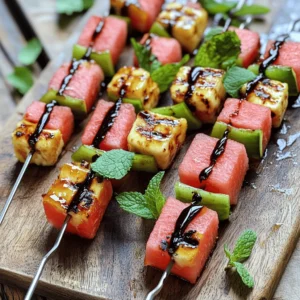

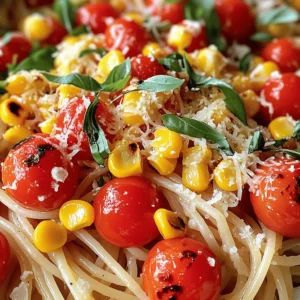
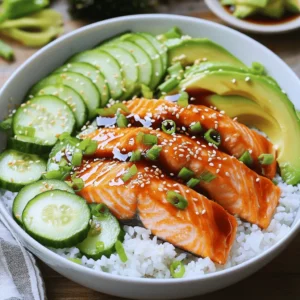

![To make One-Pot Chicken Alfredo, you need a few simple ingredients. Here’s what you will need: - 2 tablespoons olive oil - 2 boneless, skinless chicken breasts, cubed - Salt and pepper to taste - 3 cloves garlic, minced - 1 cup chicken broth - 1 cup heavy cream - 8 ounces fettuccine pasta - 1 cup grated Parmesan cheese - 1 teaspoon Italian seasoning - 1 cup frozen peas (optional) - Fresh parsley, chopped (for garnish) These ingredients come together to create a dish that is creamy and comforting. Olive oil adds flavor and helps cook the chicken. The chicken breasts give the dish protein and heartiness. Seasoning with salt and pepper makes everything taste great. Garlic adds a nice aroma and depth of flavor. Chicken broth and heavy cream form the rich sauce. Fettuccine pasta is perfect for soaking up the sauce. Parmesan cheese adds a savory kick, while Italian seasoning gives a touch of herbiness. Frozen peas add a pop of color and nutrition. Finally, fresh parsley makes your dish look beautiful and fresh. For the full recipe, check out the [Full Recipe]. First, heat 2 tablespoons of olive oil in a large pot over medium heat. This oil helps cook the chicken and adds flavor. Next, season 2 cubed boneless chicken breasts with salt and pepper. When the oil is hot, add the chicken to the pot. Cook it for about 6 to 7 minutes. You want it browned and fully cooked. Once done, take the chicken out and set it aside on a plate. In the same pot, add 3 minced garlic cloves. Sauté them for about 1 minute until they smell good. Be careful not to burn the garlic; it can turn bitter. Then, pour in 1 cup of chicken broth and 1 cup of heavy cream. Stir it well and bring it to a gentle simmer. This step is key for a rich sauce. Next, add 8 ounces of fettuccine pasta. Press it down into the liquid, so it cooks evenly. Stir it every few minutes to keep it from sticking. Cook according to the package instructions, usually about 10 to 12 minutes. You want it to be al dente, with a nice chew. Once the pasta is cooked, reduce the heat. Stir in 1 cup of grated Parmesan cheese and 1 teaspoon of Italian seasoning. Mix until the cheese melts and the sauce becomes creamy. If you like, add 1 cup of frozen peas and let them cook for about 2 minutes. This adds color and extra nutrients. Now, return the cooked chicken to the pot and mix it all together. Adjust the taste with more salt and pepper if needed. Let the dish sit for a couple of minutes to thicken. This step makes your One-Pot Chicken Alfredo perfect. For the full recipe, check out the details above. To make One-Pot Chicken Alfredo, you must ensure the chicken is fully cooked. Cook cubed chicken for 6-7 minutes until it turns golden brown. This step makes sure it is safe to eat. Always check that the internal temperature reaches 165°F (75°C). Stirring the pasta is also important. It helps keep the noodles from sticking together. Stir the pasta every few minutes as it cooks. This way, it absorbs all the creamy goodness from the sauce. You can add more seasoning options to boost flavor. A pinch of red pepper flakes adds warmth. You can also try adding herbs like basil or oregano. These small changes can make a big difference. Using freshly grated Parmesan makes the dish taste better. Pre-grated cheese can lack flavor and creaminess. Grating it fresh allows the cheese to melt evenly into the sauce. Garnishing can elevate the look of your dish. Sprinkle fresh parsley on top for a pop of color. You can add more grated Parmesan for extra flavor. Serve the Alfredo in shallow bowls for a nice touch. This presentation makes it easier to enjoy all the creamy sauce. A beautiful plate can make your meal feel special. {{image_2}} You can change the cream for light cream or even milk. This keeps it lighter but still tasty. For pasta, try using penne or rotini instead of fettuccine. Each type gives a new twist to your One-Pot Chicken Alfredo. Want to switch up the protein? Shrimp or salmon work great in this dish. Just cook them until tender. If you prefer a vegetarian option, use tofu or mushrooms. They absorb the flavors well and add a nice texture. To add some heat, sprinkle in red pepper flakes. It gives the dish a nice kick. For herbs, basil or spinach can bring fresh flavors. Just toss them in at the end for a burst of color and taste. After cooking, let your One-Pot Chicken Alfredo cool down. This helps keep it safe to eat later. Place it in the fridge in less than two hours. Use airtight containers. Glass or plastic containers work well. This keeps the dish fresh and prevents odors from mixing. For reheating, the best method is the stovetop. Place the Alfredo in a pot over low heat. Stir often to ensure even heating. You can also use a microwave. Heat in short bursts, stirring between each. To keep the creaminess, add a splash of milk or cream while reheating. You can freeze One-Pot Chicken Alfredo if you want to save it for later. Let it cool completely before freezing. Use freezer-safe bags or containers. Remove as much air as possible to avoid freezer burn. When ready to eat, thaw it overnight in the fridge. Reheat it on the stovetop. Add a little cream to restore its creamy texture. Yes, you can use other cheeses in this recipe. Try mozzarella for a milder taste. Cheddar adds a nice twist, too. If you want something sharper, go for Pecorino Romano. Each cheese brings a unique flavor. Mixing cheeses can create a rich taste. Just remember to keep the total amount similar to the Parmesan in the full recipe. Absolutely! This dish is great for kids. If your child is picky, reduce the garlic. You can also skip the peas if they don’t like them. For a milder sauce, add less cheese. You can also serve it plain and let kids add their own toppings. Making it fun can make it more appealing to them. You can keep leftovers in the fridge for up to three days. Make sure to let it cool before storing. Use an airtight container to keep it fresh. When reheating, do it slowly on low heat. This will help keep the sauce creamy. If it seems too thick, add a splash of broth or cream to loosen it up. This blog post shared a simple recipe for One-Pot Chicken Alfredo, outlining ingredients, steps, and tips. You learned how to cook tender chicken, create a creamy sauce, and present it beautifully. Remember, you can customize the recipe with your favorite proteins or flavors. Enjoy cooking and don’t be afraid to experiment. Homemade meals can be fun and tasty! Keep this guide handy as you make your own delicious pasta dish.](https://mysavedrecipe.com/wp-content/uploads/2025/07/c268582b-ffe4-4bf2-b696-527db0596d51-300x300.webp)
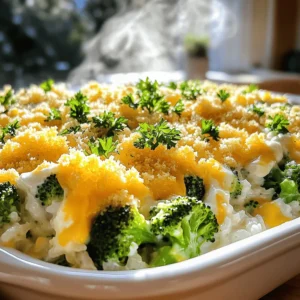

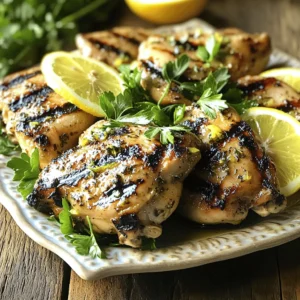
![To make garlic butter shrimp pasta, you need some key ingredients. These items will create a rich and savory delight. Here’s what you need for this dish: - 8 oz spaghetti or linguine - 1 lb large shrimp, peeled and deveined - 4 cloves garlic, minced - 1/2 cup unsalted butter - 1/4 teaspoon red pepper flakes (optional) - 1/2 cup chicken broth - 1 tablespoon lemon juice - 1/4 cup fresh parsley, chopped - Salt and pepper to taste - Grated Parmesan cheese for serving Each ingredient plays a role in the flavor and texture of the dish. The shrimp brings a sweet taste, while garlic adds depth. Butter makes the sauce rich and smooth. Lemon juice adds brightness, balancing the flavors. Fresh parsley gives a pop of color and freshness. If you want to make adjustments, the red pepper flakes can spice things up. You can also replace the shrimp with chicken or scallops if you prefer. For a more plant-based option, try adding vegetables like spinach or bell peppers. Remember, using fresh ingredients will always enhance your dish. For the full recipe, you can follow the steps to create this wonderful meal. Enjoy cooking! - Total Cooking Time: 25 minutes - Prep Time: 10 minutes - Servings: 4 Start by boiling a large pot of salted water. Add 8 oz of spaghetti or linguine. Cook it until al dente, following the package instructions. Once done, drain it but save about 1/2 cup of that pasta water. You’ll use it later for the sauce. In a large skillet over medium heat, melt 1/2 cup of unsalted butter. Add 4 minced garlic cloves and, if you like a bit of heat, 1/4 teaspoon of red pepper flakes. Sauté for about 1 minute until the garlic smells great. Then, add 1 lb of large, peeled, and deveined shrimp. Season these with salt and pepper. Cook them for 2-3 minutes on each side until they turn pink and opaque. Once cooked, take them out and set them aside. In the same skillet, pour in 1/2 cup of chicken broth and 1 tablespoon of lemon juice. Bring this mix to a simmer. Cook for 2-3 minutes, making sure to scrape any brown bits off the bottom of the pan. This adds flavor! Now, add the cooked pasta back into the skillet with the garlic butter sauce. Toss it well to coat all the noodles. If it seems too dry, add a bit of that reserved pasta water until it looks just right. Return the shrimp to the skillet and mix everything together gently. Finally, stir in 1/4 cup of chopped fresh parsley. To serve, plate the pasta and shrimp mixture in deep bowls. Top with grated Parmesan cheese and a little extra parsley. A lemon wedge on the side adds a nice touch! Enjoy your rich and savory garlic butter shrimp pasta. For the complete recipe, check the Full Recipe. Identifying Quality Shrimp When buying shrimp, look for a firm texture. Their shells should be shiny and moist. Fresh shrimp should smell like the ocean, not fishy. Avoid any shrimp with black spots or a strong odor. Seasonal Considerations Shrimp is best when in season. Look for local seafood markets for fresh catches. In the U.S., peak shrimp season is from May to August. Buying in season means better taste and quality. Achieving the Perfect Al Dente Texture To get al dente pasta, cook it for about one minute less than the package states. Stir the pasta often to keep it from sticking. Taste the pasta a minute or two before the time is up. It should be tender but still have a slight bite. Working with Different Pasta Types Spaghetti and linguine work well in this dish, but you can try others. Fettuccine or penne can also hold the sauce well. Just keep an eye on cooking times, as they may differ. Additional Seasoning Suggestions For a zesty kick, add lemon zest or more red pepper flakes. A pinch of smoked paprika can deepen the flavor. Fresh herbs like basil or thyme also pair well with shrimp. Pairings and Complementary Ingredients Serve your garlic butter shrimp pasta with a side salad or garlic bread. A crisp white wine, like Pinot Grigio, balances the rich butter. You can also add steamed asparagus or broccoli for extra veggies. For the complete cooking process, check the Full Recipe for Garlic Butter Shrimp Pasta. {{image_2}} You can switch out shrimp for chicken or scallops. Chicken makes a nice twist. It cooks well in garlic butter too. Use chicken breast, cut into bite-sized pieces. Cook it until golden brown. Then, add garlic just like in the shrimp recipe. Scallops are also a great choice. They’re sweet and tender. Sear them in the garlic butter for 2-3 minutes. This adds a rich flavor to your dish. If you want a vegetarian option, try using mushrooms or tofu. Both soak up flavor nicely. Sauté them in garlic and butter. Then, add them right to your pasta. You can make this dish even better by adding veggies. Spinach, cherry tomatoes, or bell peppers work well. Add them to the pan after the garlic. Cook until they're soft but still bright. They give color and nutrition to your meal. You might also explore other herbs and spices. Fresh basil or oregano can add depth. A sprinkle of paprika can give a smoky taste. Don’t be afraid to experiment with flavors you love. If you're gluten-free, use gluten-free pasta. Many brands offer options that cook well and taste great. Look for ones made from rice or chickpeas. They can replace regular pasta without a hitch. For a dairy-free version, skip the butter and cheese. Use olive oil instead. Nutritional yeast is a good substitute for cheese. It adds a cheesy flavor without the dairy. These variations let you enjoy garlic butter shrimp pasta in new ways, fitting your diet and taste. Explore these options to make it your own! Store your garlic butter shrimp pasta in an airtight container. This helps keep it fresh. If you have more than one serving, divide it into smaller portions. This way, you can enjoy it later without losing quality. Use glass or plastic containers with tight lids. These are great for keeping the pasta safe. Make sure the pasta cools down before sealing the container. This prevents moisture build-up, which can make the pasta soggy. To reheat your pasta, you have a few options. The microwave is quick and easy. Just put the pasta in a bowl and cover it. Heat in short bursts, stirring in between. Stovetop reheating is another option. Place the pasta in a skillet with a splash of chicken broth. Heat it over low heat, stirring gently. This method helps preserve the texture and flavor. - Microwave: Quick and convenient. Use a covered bowl. - Stovetop: Add broth to keep it moist. Heat gently. To keep the pasta tasty, avoid overheating. Heat until warm, not hot. Adding a little extra butter or broth can bring back that rich flavor. You can freeze garlic butter shrimp pasta to enjoy later. Place it in a freezer-safe container. Make sure to leave some space for expansion. - Cool the pasta completely. - Portion it into freezer-safe bags or containers. - Label with the date for easy tracking. To thaw, move the pasta from the freezer to the fridge a day before. This allows it to thaw slowly. If you’re in a hurry, you can use the microwave. Just set it to defrost, checking often to avoid cooking it. Enjoy your garlic butter shrimp pasta, even days later! For the complete recipe, check [Full Recipe]. Garlic butter shrimp pasta lasts about 3 to 4 days in the fridge. Store it in an airtight container to keep it fresh. Always check for any off odors before eating. Yes, you can make garlic butter shrimp pasta ahead of time. Just cook the pasta and shrimp, then store them separately. Reheat them together before serving for the best taste. You can substitute shrimp with chicken, scallops, or even tofu. Each option brings a unique flavor to the dish. Adjust cooking times based on the protein you choose. To add spice, use more red pepper flakes or add fresh chopped chili. You can also mix in some hot sauce for a different kick. Adjust the heat to your taste. Spaghetti and linguine work best for this dish. They hold the sauce well and complement the shrimp nicely. You can also try fettuccine for a thicker noodle. For the full recipe, check the Garlic Butter Shrimp Pasta section above. This blog post covered a simple and delicious garlic butter shrimp pasta recipe. You learned the key ingredients, preparation steps, and cooking tips. I shared ways to enhance flavor and offered alternatives for different diets. Remember, using fresh shrimp makes a big difference. Enjoying your meal is the goal, so feel free to get creative. Explore different variations to keep this dish exciting. Your kitchen is a place for fun, so try new things without fear. Cooking should be enjoyable, and I hope this recipe inspires you to share it with others.](https://mysavedrecipe.com/wp-content/uploads/2025/07/f92a8637-d812-4a50-a9c2-3c52008c3066-300x300.webp)
![- 3 ripe peaches, sliced - 1 cup heavy whipping cream - 1/2 cup powdered sugar - 1 teaspoon vanilla extract - 1 1/2 cups graham cracker crumbs - 1 cup cream cheese, softened - 1 tablespoon lemon juice - 2 tablespoons honey - Fresh mint leaves for garnish No-Bake Peach Icebox Cake is fun to make. You start with fresh peaches. They give the cake a juicy, sweet flavor. The heavy whipping cream adds a light and fluffy texture. Powdered sugar adds sweet notes that balance the tartness of peaches. Next, you need graham cracker crumbs. They form the cake's base and add a crunchy bite. Cream cheese gives the cake a creamy richness. Mixing in vanilla extract boosts the flavor profile even more. Lemon juice adds a refreshing twist. It brightens all the flavors and lifts the dish. Honey adds more natural sweetness and a hint of floral notes. Finally, fresh mint leaves make a lovely garnish. They add color and a burst of freshness. For the full recipe, you can check the details above. This treat is perfect for warm days. It's simple, refreshing, and all about using good ingredients. First, you need to whip the heavy cream. Use a large mixing bowl and an electric mixer. Whip until soft peaks form. This step is key for a light texture. Next, gradually add the powdered sugar and vanilla extract. Continue to whip until stiff peaks form. This cream will be a big part of your cake's charm. In another bowl, mix the softened cream cheese, lemon juice, and honey until smooth. This mixture adds a rich, creamy layer. It’s best to use a spatula to get it nice and creamy. Now, gently fold this cream cheese mix into the whipped cream. Be careful not to deflate the whipped cream. This folding keeps the mixture airy. Grab a rectangular baking dish for this part. Start by spreading a thin layer of the cream mixture at the bottom. This helps keep the graham crackers from sticking. Then, place a layer of graham cracker crumbs over the cream. After that, add a layer of sliced peaches on top. Repeat this process, alternating layers of cream, crackers, and peaches. Finish with a final layer of cream on top. This layering creates a beautiful look. Cover your dish with plastic wrap. Refrigerate for at least 4 hours, or overnight if you can wait. This chilling time is vital. It lets the graham crackers soak and the flavors mix. When you are ready to serve, cut into squares. You can garnish with fresh mint leaves for a nice touch. This adds color and a fresh scent to the cake. Enjoy your No-Bake Peach Icebox Cake with friends and family. For the full recipe, check the details above. When picking peaches, look for ripe ones. They should feel soft but not mushy. Ripe peaches smell sweet and have a light color. Avoid overripe peaches as they can spoil your cake. If peaches are out of season, use canned or frozen peaches. Just drain the syrup and pat them dry before using. To whip the cream well, start with cold heavy cream. Use a chilled bowl and beaters for best results. Whip until soft peaks form, then add powdered sugar. Fold in the cream cheese mixture slowly. This keeps the cream light and fluffy. Be gentle when folding to avoid losing air. This cake pairs great with ice cream or extra whipped topping. A scoop of vanilla ice cream adds a nice touch. For a party, slice the cake into squares and arrange them on a platter. Garnish with fresh mint leaves for color and flavor. It makes the dessert look fancy and fresh. {{image_2}} You can make this peach icebox cake even more fun by adding different fruits. Try using berries like strawberries or blueberries for a burst of color and taste. Mango slices also work great for a tropical twist. You can also switch up the cream cheese. Use flavored cream cheese, like strawberry or honey, to give your cake a unique flair. If you want a lighter version, use low-fat cream for the whipped part. You can also reduce sugar by using sugar substitutes like stevia or monk fruit. These swaps can help make the dessert healthier while still tasting sweet and delicious. For a gluten-free cake, replace graham cracker crumbs with almond flour or gluten-free cookies. You can also use gluten-free vanilla wafers to keep the layers intact. When layering, be gentle, as gluten-free options may not hold up as well. These tips will help you create a tasty gluten-free peach icebox cake. For the full recipe, check out the [Full Recipe]. To keep your peach icebox cake fresh, store it in the fridge. Use an airtight container to prevent moisture loss and keep flavors intact. If you don't have a container, cover the dish with plastic wrap. This helps seal in the taste and texture. Make sure it touches the top of the cake to avoid drying out. Can you freeze the cake? Yes, you can freeze your peach icebox cake. However, it’s best to freeze it before serving. Wrap it well in plastic wrap and then in aluminum foil. This extra layer helps prevent freezer burn. For thawing after freezing, place the cake in the fridge overnight. This method keeps it cool and tasty. Avoid thawing at room temperature, as it may change the texture. How long does it last in the fridge? Your cake will last about 3 to 5 days in the fridge. Keep an eye on it. Signs the cake has gone bad include a sour smell or an off taste. If you see any mold, throw it away. Eating spoiled food can make you sick. Enjoy your delicious treat while it’s fresh! For the full recipe, check out the earlier section. An icebox cake is a no-bake dessert. It layers cookies or crackers with cream and fruit. This cake gets its name from the time when people used iceboxes to chill food. It’s simple to make and perfect for hot days. Yes, you can make this cake a day before serving. It tastes even better after chilling overnight. This gives the flavors time to blend well. Just cover it tightly in the fridge. Check if the cake is firm and chilled. The graham crackers should be soft but not mushy. You can slice it easily into squares. If it looks set and cool, it’s ready to enjoy. Yes, you can make a vegan icebox cake. Use coconut cream instead of heavy cream. Replace cream cheese with a vegan cream cheese. You can also use maple syrup in place of honey. These swaps keep the cake tasty and dairy-free. For the full recipe, check the instructions above. This blog post covered how to make a delicious peach icebox cake. We talked about the main ingredients, like ripe peaches and cream, and how to layer them. You learned tips to achieve the perfect texture and how to store your cake. Whether you want healthier options or flavor variations, there’s something for everyone. Get ready to impress your friends or family with this easy yet tasty dessert. With the right peaches and a few simple steps, your cake will be a hit at any gathering. Enjoy your baking!](https://mysavedrecipe.com/wp-content/uploads/2025/07/10c6ba83-305a-494a-9a21-3e4cbc32bde1-300x300.webp)

![- 4 medium yellow squashes, sliced into ¼-inch rounds - 1 tablespoon olive oil - 2 cloves garlic, minced - 1 teaspoon fresh thyme leaves (or ½ teaspoon dried thyme) - ½ teaspoon red pepper flakes (optional for spice) - Salt and pepper to taste - ¼ cup grated Parmesan cheese (optional for serving) - Fresh parsley for garnish To make easy sautéed yellow squash, gather these simple ingredients. The yellow squash adds bright color and a mild flavor. The garlic brings a nice aroma. Olive oil helps in cooking and adds richness. Fresh thyme gives a lovely herbal note. If you like a little heat, red pepper flakes work great. Salt and pepper enhance all the flavors. Finally, Parmesan cheese adds a nice touch if you choose to use it. Fresh parsley brightens the dish and makes it look pretty. This dish is quick to prepare and perfect for summer meals. You can find the full recipe in the article above. - First, slice the yellow squash into ¼-inch rounds. - Next, mince the garlic cloves finely. - Heat 1 tablespoon of olive oil in a large skillet over medium heat. - Add the minced garlic and sauté it for about 30 seconds. Keep an eye on it; you do not want it to brown. - Toss in the sliced yellow squash and stir well to coat it in the garlic oil. - Sprinkle in 1 teaspoon of fresh thyme leaves, ½ teaspoon of red pepper flakes if you like spice, and some salt and pepper to taste. - Sauté the squash for about 5 to 7 minutes, stirring occasionally. You want it tender but still a bit crisp. - When done, remove it from heat. If you like, sprinkle ¼ cup of grated Parmesan cheese on top while it’s hot. - Lastly, garnish with fresh parsley before serving. You can find the full recipe for this dish to enjoy the summer flavors. To choose fresh yellow squash, look for bright, smooth skin. The squash should feel firm and heavy for its size. Avoid any squash with soft spots or wrinkles. For sautéing, I recommend a large non-stick skillet. This type of skillet helps the squash cook evenly and prevents sticking. A well-seasoned cast-iron skillet also works well. You can try adding herbs like basil or oregano for a fresh twist. A splash of lemon juice at the end brightens the dish. Always be careful not to overcook the squash. You want it to be tender but still have a slight crunch. Yellow squash pairs well with grilled chicken or fish. You can also serve it alongside rice or quinoa for a healthy meal. For leftovers, store the squash in an airtight container in the fridge. It stays good for about three days. {{image_2}} You can swap out yellow squash for other veggies. Try zucchini, bell peppers, or even green beans. Each will give a different taste and texture. You can also play with seasonings. Instead of thyme, use basil or oregano. For more kick, try cumin or smoked paprika. These changes can make the dish new and exciting. You don’t have to sauté the squash. Oven-roasting brings out natural sweetness. Just toss the squash with oil and seasonings, and roast at 400°F for 20 minutes. You can also grill the squash. Grilling adds a smoky flavor that many love. Just slice it thick and place it on the grill for a few minutes on each side. If you need gluten-free options, this recipe is already safe. Just skip the Parmesan cheese if you want. For a vegan twist, replace the cheese with nutritional yeast. It gives a cheesy flavor without dairy. You can also add nuts or seeds for extra protein. These options keep the dish tasty and healthy for everyone. Explore the [Full Recipe] for more details on making this dish! To keep your sautéed yellow squash fresh, use airtight containers. Glass or plastic containers with tight lids work best. Make sure the squash cools down before sealing it. Store the squash in the fridge for up to three days. You can reheat leftover squash in a few ways. The best method is to use a skillet. Heat it on medium-low heat and add the squash. Stir often to warm it through. You can also microwave it in short bursts. Just be careful not to overheat it, as that can make the squash mushy. If you want to save cooked squash for later, freezing is a great option. First, let the squash cool completely. Then, place it in a freezer-safe bag or container. Remove as much air as you can. When you're ready to use it, thaw it overnight in the fridge. You can also microwave it on low power to defrost. This way, you can enjoy your sautéed yellow squash long after making the Full Recipe! I recommend sautéing yellow squash for about 5 to 7 minutes. This time allows the squash to become tender while keeping a little crispness. Stir occasionally for even cooking. Check for doneness by piercing with a fork. If it goes in easily, it’s ready! Yes, you can add other vegetables! Bell peppers, onions, and zucchini pair well with yellow squash. Just remember to cut them into similar sizes for even cooking. You can also try adding spinach or tomatoes for extra flavor and color. Yellow squash is low in calories and high in vitamins. It contains vitamin C, which boosts your immune system. It also has potassium, which is good for heart health. Plus, it has fiber to help with digestion. Eating yellow squash supports your overall health. To keep squash firm, do not overcook it. Start by heating your skillet well before adding the squash. Stir occasionally, but not too often. You want to give it time to brown slightly. This helps keep the texture right. Yes, this recipe is great for meal prep! You can make a big batch and store it in the fridge. It keeps well for about 3 to 4 days. Just reheat in a skillet or microwave before serving. This makes it easy to enjoy healthy meals all week long! For the full recipe, check out the previous section. In this blog post, I shared a simple way to cook yellow squash. We walked through key ingredients, preparation steps, and cooking methods. You learned tips for enhancing flavor and storing leftovers. I also covered easy variations to fit your diet. In conclusion, cooking yellow squash is fun and easy. With these details, you can enjoy a tasty dish packed with nutrients. Try different methods and flavors to make it your own. Enjoy your cooking journey!](https://mysavedrecipe.com/wp-content/uploads/2025/07/f6a4656a-7c03-49f3-8517-082d4d2e71be-300x300.webp)
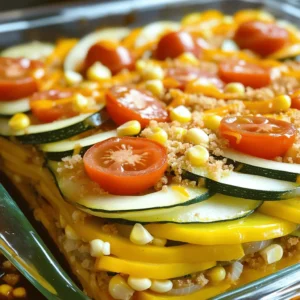
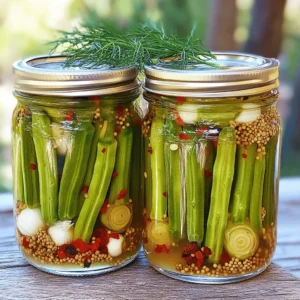
![- 2 medium zucchinis, grated - 1 cup granulated sugar - 1/2 cup brown sugar, packed - 3 large eggs - 1/2 cup vegetable oil The star of this recipe is the grated zucchini. It gives the bread a moist and tender crumb. The sugars add sweetness and a nice crust. Eggs provide structure, while vegetable oil keeps it soft. You can also use applesauce for a lighter touch. - 2 cups all-purpose flour - 1 teaspoon baking soda - 1/2 teaspoon baking powder - 1 teaspoon ground cinnamon - 1/4 teaspoon ground nutmeg - 1/2 teaspoon salt The dry ingredients balance the wet ones. Flour forms the base of the bread. Baking soda and baking powder work together to help it rise. Cinnamon and nutmeg add warm flavor. Salt enhances all the tastes. - 1 cup walnuts, chopped (optional) - 1/2 cup chocolate chips (optional) You can add chopped walnuts for crunch. Chocolate chips add a sweet touch. These optional ingredients let you customize your bread. Feel free to mix and match to suit your taste. This is just a glimpse of the ingredients you need for the best zucchini bread. For the full list and measurements, check the [Full Recipe]. 1. Preheat your oven to 350°F (175°C). 2. Grease and flour a 9x5 inch loaf pan or use parchment paper. 3. In a large bowl, combine the grated zucchini, granulated sugar, and brown sugar. 4. Mix well and let it sit for about 10 minutes. This helps release moisture. 1. In another bowl, whisk together the eggs, vegetable oil, and vanilla extract. 2. Make sure the mixture is smooth before moving on. 1. In a separate bowl, sift together the flour, baking soda, baking powder, ground cinnamon, ground nutmeg, and salt. 2. Gradually add the dry ingredients to the wet mixture. 3. Stir gently until just combined. Be careful not to overmix. This keeps your bread tender. 1. Pour the batter into the prepared loaf pan. 2. Smooth the top with a spatula. 3. Bake for 50-60 minutes. Check with a toothpick to see if it's done. 4. When the toothpick comes out clean, remove the bread from the oven. 5. Let it cool in the pan for about 10 minutes before transferring to a wire rack. For the Full Recipe, refer to the main article. You will love the results! To make your zucchini bread moist, start by squeezing out excess moisture from the grated zucchini. This step is key. Too much water makes the bread soggy. Use a clean kitchen towel or cheesecloth to press the zucchini. Then, let the mixture rest for about 10 minutes. This allows the zucchini to release more moisture, making your bread tender and soft. One common mistake is overmixing the batter. When you mix too much, the bread can turn out dense. Mix just until you see no dry flour. Another mistake is not measuring ingredients correctly. Use measuring cups and spoons for accuracy. A little too much or too little can change the texture and taste of your bread. You can enhance the flavor of your zucchini bread with spices like cinnamon and nutmeg. These warm spices add depth. Consider adding chopped walnuts or chocolate chips for texture. These extras make each bite a delight. Feel free to experiment with other mix-ins too, like dried fruits or seeds. This way, you can find the perfect combination that you love. {{image_2}} You can make zucchini bread healthier with a few easy swaps. - Using whole wheat flour: Whole wheat flour adds fiber and nutrition. It also gives a nutty flavor. Use it in a 1:1 ratio to replace all-purpose flour. - Lower sugar options: Cut down sugar without losing taste. Try using honey or maple syrup instead of granulated sugar. You can also reduce the sugar by one-third for a lighter loaf. Adding different flavors can make your zucchini bread special. - Adding spices like ginger or cloves: A pinch of ginger adds warmth and spice. Cloves can bring a nice depth. Just a quarter teaspoon of each works well. - Incorporating fruit such as applesauce: Adding unsweetened applesauce makes the bread moist and fruity. It also reduces the need for extra sugar. Swap out half of the oil for applesauce to keep it light. You can also play with seasonal ingredients to change the flavor. - Dried fruits (raisins, cranberries): These add sweetness and chewy texture. Mix in half a cup of dried fruits for a fun twist. - Seasonal spices like pumpkin pie spice: This spice blend brings a cozy taste, perfect for fall. Just a teaspoon can change everything. Try these variations to make the best zucchini bread your own! For the full recipe, check out Ultimate Zucchini Delight Bread. To keep your zucchini bread fresh, store it in an airtight container. This will help keep moisture in and prevent it from drying out. If you have leftover slices, you can wrap them in plastic wrap before placing them in the container. For long-term storage, freezing is a great option. Simply slice your zucchini bread, wrap each slice tightly in plastic wrap, and place them in a freezer-safe bag. When you want to enjoy a slice, just take it out and let it thaw at room temperature. How long does zucchini bread last? If stored properly, your zucchini bread can last about 1 week at room temperature. You can keep it in the fridge for up to 2 weeks if you want it to last longer. What are the signs that zucchini bread has gone bad? Look for changes in smell, color, or texture. If you notice any mold or an off smell, it's best to toss it out. Always trust your senses; if it doesn’t look or smell right, don’t eat it. For more details, check the Full Recipe for the best zucchini bread! Yes, you can use frozen zucchini. First, thaw the zucchini in the fridge overnight. After it is thawed, drain it well. You want to remove excess moisture to keep your bread from getting soggy. Squeeze the zucchini with a clean kitchen towel or paper towels until it is dry. Yes, you can make this bread gluten-free. Use a gluten-free flour blend instead of all-purpose flour. Look for blends that include xanthan gum for better texture. Almond flour or oat flour can also work, but you may need to adjust the liquid in the recipe. You can enjoy leftover zucchini bread in many ways! Try toasting slices and spreading butter or cream cheese on top. You can also use it to make French toast. Just dip the slices in an egg mixture and cook them on a skillet. For a fun twist, crumble it over yogurt or ice cream for dessert. Zucchini bread is a tasty treat you can easily make at home. We covered key ingredients like zucchini, sugars, and spices. I shared step-by-step instructions for mixing and baking. Tips showed you how to keep it moist and avoid common mistakes. You learned about variations and healthier options too. When stored correctly, your zucchini bread stays fresh longer. Now you can enjoy making delicious zucchini bread with confidence!](https://mysavedrecipe.com/wp-content/uploads/2025/07/6f31c744-c1ee-4f10-bddd-bc37d92c1e1e-300x300.webp)
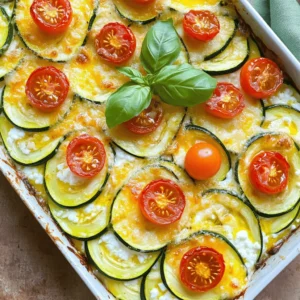
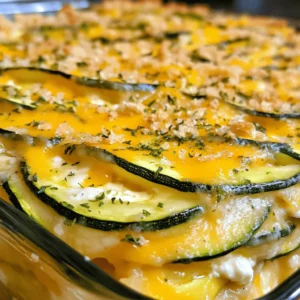
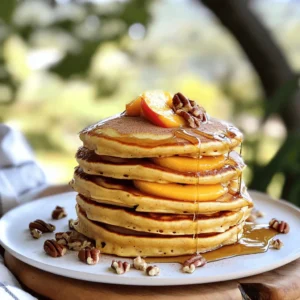
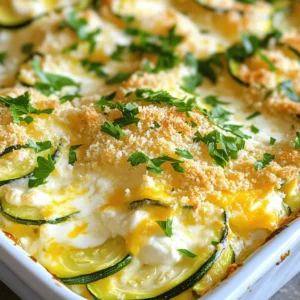

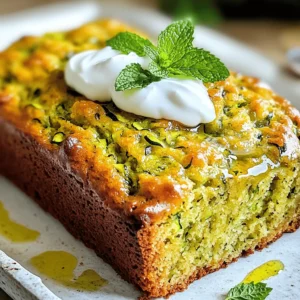
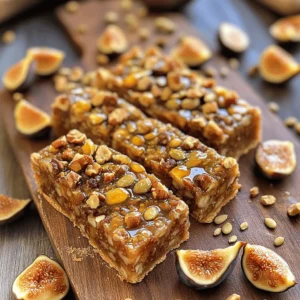
. To keep your stuffed yellow squash fresh, first let it cool. After cooling, store leftovers in the fridge. Wrap each squash half tightly in plastic wrap. You can also place them in an airtight container. This keeps moisture in and prevents odors from mixing. The dish stays fresh for about 3-4 days in the fridge. Use glass or plastic containers that seal tightly. They are great for storing your squash. Glass containers let you see the food inside. They are also easy to clean. Choose containers that fit the size of your leftovers. Avoid using aluminum foil for long-term storage. It can react with the food and change the taste. To enjoy the flavors again, reheat leftovers carefully. The best method is to use an oven. Preheat the oven to 350°F (175°C). Place the stuffed squash in a baking dish. Cover with foil to keep moisture in. Heat for about 15-20 minutes until warm. This keeps the squash tender and the filling moist. You can also use a microwave for quick reheating. Place the squash on a microwave-safe plate. Cover it with a damp paper towel to keep it from drying out. Heat in short bursts, about 1-2 minutes at a time. Check the temperature to avoid overheating. The oven gives a better result, but the microwave is faster. Choose the method that works best for you. Can I use frozen squash? Yes, you can use frozen squash. Just thaw it before using. Frozen squash may change the texture a bit, but it still tastes good. How long does the dish last in the fridge? Stuffed yellow squash lasts about three to four days in the fridge. Store it in an airtight container to keep it fresh. Can I prepare this in advance? Absolutely! You can prepare the filling a day before. Just store it in the fridge. When ready, stuff the squash and bake. What can I serve with stuffed squash? Stuffed squash pairs well with a fresh salad or crusty bread. You could also serve it with rice or quinoa for a complete meal. What temperature should the beef be cooked to? Cook the beef to an internal temperature of 160°F (71°C). This ensures it’s safe to eat and full of flavor. Can I bake the stuffed squash without the cheese? Yes, you can bake it without cheese. The dish will still taste great! If you want, add a sprinkle of herbs for extra flavor. This dish combines yellow squash, ground beef, and quinoa into a tasty meal. We covered gathering fresh ingredients, preparing, and cooking the squash perfectly. I shared tips for serving and storing leftovers, plus ways to adapt the recipe. Remember, feel free to change the meat or add veggies. With these steps and tricks, you can enjoy a hearty meal. Test the recipe, impress your friends, and dive into the flavors!](https://mysavedrecipe.com/wp-content/uploads/2025/07/02a96845-252a-46e0-b429-cb18401ca88a-300x300.webp)
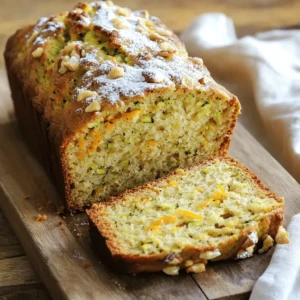
![- Cucumbers and the ideal variety I love using small cucumbers for this recipe. Look for pickling cucumbers, like Kirby or Persian. They have a crisp texture and great flavor. Slice them into rounds. This helps them absorb the brine well. - Vinegar types and their flavor influences For this recipe, I use apple cider vinegar. It adds a nice tang. You can also try white vinegar or rice vinegar for a different taste. Each type of vinegar can change how the pickles taste, so feel free to experiment. - Additional seasonings and their roles Seasonings are key to great flavor. I add garlic for depth and mustard seeds for a little crunch. Dill seeds give a fresh taste, while crushed red pepper adds heat. You can adjust these to suit your taste, making them your own. For the full recipe, check [Full Recipe]. To make quick refrigerator pickles, start with the cucumbers. I like using small cucumbers for this recipe. Rinse them well and slice them into thin rounds. This helps the flavors soak in more. Next, make the vinegar brine. In a medium saucepan, combine 1 cup of water, 1 cup of apple cider vinegar, 2 tablespoons of sugar, and 1 tablespoon of salt. Heat this mixture on medium until the sugar and salt dissolve. Do not boil it. Once it’s dissolved, remove it from the heat and let it cool slightly. Now it's time to layer the ingredients in the jar. Take a clean jar and add the cucumber slices. Follow with 2 smashed garlic cloves, 1 teaspoon of mustard seeds, and 1 teaspoon of dill seeds. If you like some heat, add 1/2 teaspoon of crushed red pepper flakes here. This step adds a pop of flavor. Cooling the brine is very important. It helps keep the cucumbers crisp and fresh. Once the brine cools a bit, pour it over the cucumbers in the jar. Make sure they are fully submerged in the liquid. Seal the jar tightly and place it in the refrigerator. The pickles need time to develop flavor. For the best taste, let them sit for at least 24 hours. You can munch on them after a few hours, but they taste best when given time to soak. Enjoy your quick refrigerator pickles! You can make your pickles just how you like them. Want sweeter pickles? Add more sugar to the brine. If you like it spicy, throw in extra crushed red pepper flakes. You can also mix in herbs like thyme or oregano for a twist. Fresh dill sprigs can add a nice touch too. Feel free to experiment with flavors to find your perfect pickle. When making quick refrigerator pickles, keep a few things in mind. First, be careful with salt. Too much salt can spoil the taste, while too little can make them bland. Next, make sure you fully submerge the cucumbers in the brine. If they float above the liquid, they won’t pickle well. Using a weight or another jar can help keep them submerged. Avoid these mistakes for the best results with your pickles. {{image_2}} You can pick more than just cucumbers for your quick pickles. Carrots, radishes, and onions work great too. They offer unique flavors and colors. Slice your chosen veggies into thin pieces. This helps them soak up the brine better. You can create a mixed vegetable pickle jar. Just layer your favorite veggies and follow the same brining steps. This mix adds a fun twist to your meals. Want to change the flavor of your pickles? Try adding soy sauce for an Asian-inspired twist. It gives your brine a savory depth. You can also add citrus, like lime or lemon juice, for a fresh taste. This brightens the pickles and makes them even more refreshing. Feel free to experiment! Every new flavor can lead to a delightful surprise. Each batch can be unique, just like your taste! For your quick refrigerator pickles, the right container is key. I recommend using glass jars. They are easy to seal and let you see the pickles. Make sure they have tight-fitting lids. This helps keep the pickles fresh. Plastic containers can work too, but glass is better. To maximize shelf life, keep the pickles submerged in the brine. This helps prevent air from spoiling them. Always use clean utensils when taking pickles out. This keeps bacteria away and helps them last longer. How long will pickles last in the fridge? Quick refrigerator pickles can last about two to four weeks. The vinegar helps preserve them. As time goes on, they may lose some crunch but will still taste great. Watch for signs of spoilage. If you see mold or an off smell, it's time to toss them. If the brine turns cloudy, that can also mean they are past their prime. Always trust your senses. Enjoy your pickles while they are still fresh! Refrigerator pickles should sit for at least 24 hours. This time allows the flavors to blend well. If you’re in a hurry, you can taste them after a few hours. However, they will be better after a full day. Yes, you can reuse the brine. Just strain it to remove any bits. Store it in the refrigerator for up to a week. You can use it for another batch of pickles. Just keep in mind that the flavor may change with each use. No, refrigerator pickles are not meant for canning. Canning needs special methods to kill germs. Refrigerator pickles are quick and easy. They stay fresh in the fridge but do not last as long as canned pickles. If you want to try canning, look for recipes designed for that process. Making homemade pickles is a fun and tasty project. We covered the needed ingredients, including cucumbers and vinegars, and shared clear steps for preparation and cooling. Customizing your pickles is easy with seasonings and new flavors. We also explored variations with other vegetables and shared storage tips. Remember to watch for signs of spoilage to keep your pickles fresh. With this guide, you can create delicious pickles your way. Happy pickling!](https://mysavedrecipe.com/wp-content/uploads/2025/07/3685e86a-b74b-4d70-9b8f-0740dda85722-300x300.webp)
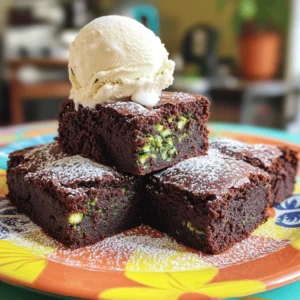
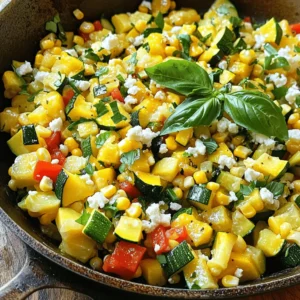
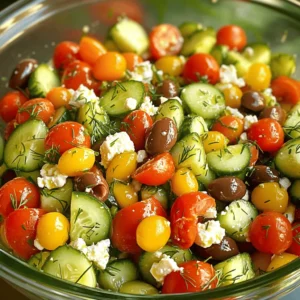
![- 1 medium zucchini, grated - 1 medium apple, peeled and grated - 1 cup all-purpose flour - 1 cup whole wheat flour - 1 teaspoon baking powder - 1 teaspoon baking soda - 1 teaspoon cinnamon - 1/2 teaspoon nutmeg - 1/2 teaspoon salt - 3/4 cup sugar (adjust based on sweetness preference) - 1/2 cup brown sugar - 2 large eggs - 1/2 cup vegetable oil - 1 teaspoon vanilla extract - 1/2 cup chopped walnuts or pecans (optional) - 1/2 cup raisins or chopped dried cranberries (optional) Using fresh, high-quality ingredients makes a big difference. I love using a medium zucchini and a crisp apple. The zucchini adds moisture, while the apple brings a sweet touch. For flour, I mix all-purpose with whole wheat for a heartier bite. Baking powder and baking soda give the bread its rise. The cinnamon and nutmeg add warmth and spice, making every bite comforting. When it comes to sweeteners, I use both white and brown sugar. You can adjust the sugar based on how sweet you want your bread. Eggs help bind everything together, while vegetable oil keeps the bread rich and moist. A splash of vanilla adds a lovely aroma. If you want to add texture, toss in nuts or dried fruit. This blend of ingredients creates a deliciously moist Apple Zucchini Bread that is hard to resist. For the complete cooking instructions, refer to the Full Recipe! - Preheat your oven to 350°F (175°C). - Grease a 9x5 inch loaf pan or line it with parchment paper. - In a mixing bowl, combine: - 1 cup all-purpose flour - 1 cup whole wheat flour - 1 teaspoon baking powder - 1 teaspoon baking soda - 1 teaspoon cinnamon - 1/2 teaspoon nutmeg - 1/2 teaspoon salt - Whisk these dry ingredients together until they blend well. - In another large bowl, cream together: - 3/4 cup sugar - 1/2 cup brown sugar - 2 large eggs - Beat these until smooth and creamy. - Next, add: - 1/2 cup vegetable oil - 1 teaspoon vanilla extract - Mix well until it becomes a smooth batter. - Stir in the grated zucchini and grated apple until fully mixed. - Gradually add the dry mix to the wet mix. Stir gently until just combined. - Be careful not to overmix; this keeps the bread fluffy. - If you like, fold in: - 1/2 cup chopped walnuts or pecans - 1/2 cup raisins or chopped dried cranberries - Pour the batter into your prepared loaf pan, spreading it evenly. - Bake for 50-60 minutes. Check with a toothpick; it should come out clean. - Let the bread cool in the pan for 10 minutes before transferring it to a wire rack. - Slice and serve your Apple Zucchini Bread warm or at room temperature. You can find the Full Recipe for more details. To get a moist texture in your Apple Zucchini Bread, follow these steps: - Use fresh ingredients. Fresh zucchini and apples bring natural moisture. - Do not overmix. Mix just until the dry and wet ingredients blend. Overmixing can make the bread dense. Enjoy your Apple Zucchini Bread in various ways: - Serve warm. A warm slice tastes best right from the oven. - Try spreads. Cream cheese or butter adds a nice richness. - Pair with tea. A cup of herbal tea complements the flavors well. Make your Apple Zucchini Bread look as good as it tastes: - Use a wooden board. Serving on a rustic wooden cutting board adds charm. - Garnish with fruit. Add apple slices or a sprig of mint on top. - Sprinkle powdered sugar. A light dusting of powdered sugar creates a lovely finish. For the complete recipe, refer to the [Full Recipe]. {{image_2}} You can make a fantastic gluten-free Apple Zucchini Bread. Swap the all-purpose flour with a gluten-free blend. Look for one that includes xanthan gum. This helps mimic the structure of regular flour. Also, check that your baking powder is gluten-free. This change keeps the bread soft and moist. To make this bread vegan, replace the eggs with flax eggs. Mix one tablespoon of ground flaxseed with three tablespoons of water. Let it sit until it thickens. Use applesauce instead of oil to keep the bread moist. It adds sweetness too. You can also choose a plant-based milk, like almond or oat milk, to add moisture. Enhance the flavors with spices or citrus zest. Adding more cinnamon boosts warmth. You might try nutmeg, cardamom, or even a hint of ginger for fun. Citrus zest from an orange or lemon brightens the taste. Just a teaspoon can make a big difference. This little tweak brings out the sweetness of the apples. You can find the full recipe to explore these variations and more! You can store Apple Zucchini Bread at room temperature or in the refrigerator. If you keep it at room temperature, wrap it in plastic wrap or foil. This keeps it moist. It can last for about three days. If you prefer to use the fridge, it can last up to a week. Just remember, the cold can make it a bit drier. Freezing is a great option for longer storage. First, let the bread cool completely. Then, wrap it tightly in plastic wrap. You can also use aluminum foil for extra protection. Place the wrapped bread in a freezer bag to keep out air. It should stay fresh for about three months. When you're ready to eat it, you can pull it out and thaw it. To reheat your bread, take it out of the freezer. Let it sit at room temperature for a few hours. You can also use the microwave. Heat it in short bursts, about 10 to 15 seconds. If you like it warm, you can pop it in the oven at 350°F (175°C) for about 10 minutes. This warms it up without drying it out. Enjoy your moist and tasty Apple Zucchini Bread! Yes, you can use other fruits or vegetables. Carrots or peaches work well. You can mix them in with the zucchini and apple for varied flavors. Just make sure to keep the moisture in check. For example, if you add more fruits, reduce the oil slightly. To make it less sweet, reduce the sugar. Start by cutting the sugar by a quarter cup. You can also use unsweetened applesauce instead of some sugar. This keeps the bread moist while lowering sweetness. Taste the batter before baking to ensure it's just right for you. If your bread is too dense, it may need more moisture or aeration. Check if you overmixed the batter. If so, gently fold the ingredients next time. Adding an extra egg can also help lighten the texture. You can try adding a bit more oil or applesauce for moisture. Apple Zucchini Bread lasts about 3 to 5 days at room temperature. Make sure to wrap it tightly to keep it fresh. If you store it in the fridge, it can last up to a week. For longer storage, consider freezing it. Absolutely! You can use a mini loaf pan or muffin tin. Adjust the baking time to about 20 to 30 minutes for muffins. For mini loaves, check them around 30 to 40 minutes. They will bake faster than the full-sized loaf. Enjoy these fun, portable options! Feel free to check the Full Recipe for more details on preparation and baking times! This Apple Zucchini Bread is a wonderful treat. It is moist and full of flavor. You can whip it up in just a bit over an hour. The prep time is about 15 minutes, and baking takes around 50-60 minutes. - Prep Time: 15 minutes - Total Time: 1 hour 10 minutes - Servings: 10-12 slices For the best taste, serve each slice warm or at room temperature. I love placing the slices on a wooden cutting board. A dollop of cream cheese or a sprinkle of powdered sugar makes it even better. You can also add some apple slices or a sprig of mint for a pretty touch. Check out the [Full Recipe] for detailed steps and tips. Enjoy making this delicious bread! This blog post covered how to make tasty Apple Zucchini Bread. We explored the key ingredients, step-by-step instructions, and helpful tips for baking. You'll find serving ideas, storage options, and even variations to try. Incorporating healthy ingredients like apples and zucchini adds flavor and nutrition. Enjoying this bread is easy and fun. Your kitchen will fill with delightful smells as it bakes. Dive in, share with friends, and make happy memories with this fantastic recipe!](https://mysavedrecipe.com/wp-content/uploads/2025/07/d1846213-3f14-4087-92fb-2abcc76c7e7f-300x300.webp)
![- 6 large eggs - 1/4 cup milk - 1 cup bell peppers (diced) - 1/2 cup cherry tomatoes (halved) - 1/2 cup spinach (chopped) - 1 small red onion (finely chopped) - 1 cup shredded cheese (cheddar or feta) - 2 tablespoons olive oil - Salt and pepper to taste - Fresh herbs (basil or parsley) for garnish To make a tasty frittata, you need fresh ingredients. Eggs are the main part. They give the dish its base. Milk adds creaminess. Bell peppers bring color and crunch. Cherry tomatoes add sweetness. Spinach gives a healthy boost. Red onion adds flavor. Cheese makes it rich and gooey. Olive oil helps cook and adds taste. Lastly, salt and pepper enhance all the flavors. Fresh herbs add a nice touch when you serve. - Alternative vegetables to consider: Try zucchini, mushrooms, or kale. These can change the taste. - Dairy-free options for milk and cheese: Use almond milk or coconut milk. For cheese, try vegan options. - Protein additions: meats or beans: Add cooked chicken, turkey, or black beans for extra protein. You can mix and match ingredients. This way, you can make the frittata your own. If you want a lighter dish, skip the cheese or use less. Get creative with what you have at home. - Calories per serving: About 200 calories. - Breakdown of key nutrients: Eggs give protein. Cheese adds calcium. Vegetables provide vitamins. Olive oil offers healthy fats. Eating a frittata gives you energy. It’s a great meal for breakfast or brunch. You can enjoy it warm or cold. Check the [Full Recipe] for more details on how to make it. Start by washing your vegetables. Dice the bell peppers into small pieces. Halve the cherry tomatoes. Chop the spinach finely. Finally, finely chop the red onion. Place all these veggies in a bowl. Next, grab a large mixing bowl. Break the six eggs into the bowl. Add a quarter cup of milk. Sprinkle in some salt and pepper. Whisk this mixture until it blends well. Set it aside for now. Heat two tablespoons of olive oil in an oven-safe skillet on medium heat. Once hot, add the red onion. Cook for about three minutes until it softens. Then, toss in the diced bell peppers. Stir and cook for another four minutes. After that, add the chopped spinach and halved cherry tomatoes. Cook for two more minutes, allowing the spinach to wilt. Now, gently pour the egg mixture over the cooked vegetables. Sprinkle the shredded cheese on top. Let it cook on the stovetop for about three to four minutes. You'll see the edges start to set. Carefully transfer the skillet to your preheated oven. Bake for 15 to 20 minutes, or until the center feels firm, and the top is golden. Once your frittata is ready, take it out of the oven. Let it cool for a few minutes. Then, slice it into wedges. You can garnish with fresh basil or parsley for a pop of color. Serve warm, and pair it with a light salad or some crusty bread. For drinks, a refreshing glass of iced tea or a light white wine works great. For the full recipe, check out the details above. To make a great frittata, focus on even cooking. Here are my top tips: - Use medium heat: This helps the frittata cook slowly and evenly. - Stir gently: When adding the egg mixture, do not stir too much. Just let it settle. - Whisk eggs well: Whisking adds air and makes your eggs fluffy. Mix until no streaks remain. A fluffy frittata starts with the eggs. Here’s how to get that perfect texture: - Add milk: Mixing in milk before cooking helps create a light and airy texture. - Don't overbeat: Too much beating can make the eggs tough. Just mix until combined. Overcooking or undercooking can ruin your frittata. Here’s how to avoid these issues: - Check for firmness: The center should be firm and not jiggly. Use a toothpick to test. - Avoid high heat: High heat cooks the outside too fast and leaves the inside raw. Choosing the right pan makes a big difference: - Use an oven-safe skillet: A cast-iron or non-stick skillet works best for frittatas. - Size matters: A pan that’s too small can lead to uneven cooking. Use a 10-12 inch pan. Seasoning is key to a tasty frittata. Here are my suggestions: - Salt and pepper: Always season your eggs before cooking for better taste. - Cheese choice: Cheddar adds sharpness, while feta gives a creamy bite. To boost flavors even more, consider these options: - Fresh herbs: Basil, parsley, or chives add a bright touch. - Spices: A pinch of paprika or crushed red pepper can add a nice kick. For a full recipe to try these tips, check out the [Full Recipe]. {{image_2}} You can make a frittata with many tasty choices. If you want meat, try sausage or ham. These meats add a nice flavor. You can also mix in more veggies. Zucchini, mushrooms, and broccoli work great. Their colors and tastes make your dish pop. The style of your frittata can change its taste. For a Mediterranean twist, use feta, olives, and sun-dried tomatoes. This combo gives a bright and fresh flavor. If you prefer a Southwest vibe, add black beans, corn, and spicy peppers. Top it off with some cilantro for extra zest. You can easily adapt frittatas for different diets. If you need gluten-free options, you’re in luck! Frittatas are naturally gluten-free. For vegetarians, just skip the meat and load up on veggies. You can also make low-carb frittatas. Use more veggies and less potato for a healthy choice. Feel free to explore the [Full Recipe] for more ideas on how to customize your frittata! To store leftovers, let the frittata cool first. Place it in an airtight container. You can keep it in the fridge for up to four days. When reheating, use a microwave or an oven. If using a microwave, heat it in short bursts. This helps keep the eggs soft and tasty. In the oven, heat at 350°F for about 10-15 minutes. Yes, you can freeze frittata! Wrap it tightly in plastic wrap or foil. Then, place it in a freezer bag. It can last up to three months in the freezer. For different types, like veggie or meat frittatas, the same rules apply. Just be sure to cool them first. In the fridge, a frittata stays fresh for four days. After that, it may spoil. Watch for signs like a sour smell or a change in texture. If it looks dry or has a weird color, throw it away. Always trust your nose and eyes when checking food! The best way to cook a frittata is to use a skillet. Start on the stovetop to cook the veggies first. Then, pour the egg mixture over them. Finish cooking by transferring the skillet to the oven. This method ensures even cooking and a great texture. You can tell the frittata is done when the center feels firm. It should not jiggle when you shake the pan. The top should also look lightly golden. You can also insert a knife in the center. If it comes out clean, it is ready. Yes, you can make a frittata ahead of time. Cook it and let it cool. Store it in the fridge for up to three days. Reheat it in the oven or microwave. This makes it great for meal prep or quick breakfasts. A frittata is cooked slowly and has more filling. It cooks in the oven and has a thicker texture. An omelet cooks quickly on the stovetop and is folded. It usually has less filling and is lighter. Both are delicious but have unique styles. In this guide, we explored how to make a delicious frittata using simple ingredients. We covered essential components, cooking methods, and tips for success. You can customize your frittata with various flavors, making it suitable for any diet. Remember to store leftovers properly for later enjoyment. With practice, you will create a perfect frittata every time. Enjoy experimenting and sharing your frittata creations with others!](https://mysavedrecipe.com/wp-content/uploads/2025/07/c0f431b2-9c70-4832-a019-4200d0c03c3f-300x300.webp)
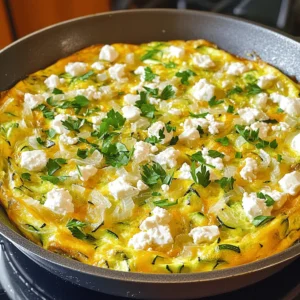
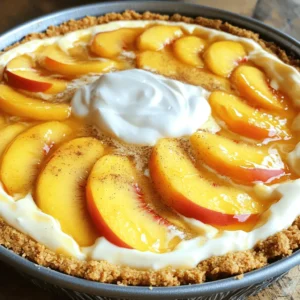
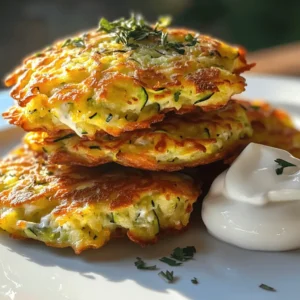
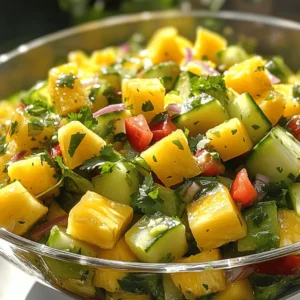
![- Zucchini and Fresh Produce - 4 medium zucchinis, thinly sliced - 1 cup cherry tomatoes, halved Zucchini is the star of this dish. I love how its mild flavor shines through. Fresh cherry tomatoes add a touch of sweetness. They balance the dish perfectly. - Dairy Ingredients - 1 cup ricotta cheese - 1 cup shredded mozzarella cheese - 1/2 cup grated Parmesan cheese The ricotta gives a creamy texture. It melts beautifully with the mozzarella and adds richness. Parmesan brings a sharp and salty kick, making the flavors pop. - Herbs and Seasonings - 3 cloves garlic, minced - 1 tablespoon fresh basil, chopped - 1 tablespoon fresh thyme, chopped - 1 tablespoon olive oil - Salt and pepper to taste - 1/2 teaspoon red pepper flakes (optional) - 1 cup breadcrumbs (for topping) Garlic adds a wonderful aroma as it cooks. Fresh herbs like basil and thyme elevate the dish with vibrant flavor. Olive oil helps everything cook nicely. You can use red pepper flakes for a little heat if you like. The breadcrumbs on top give a satisfying crunch. This mix of ingredients makes the herb zucchini casserole both tasty and fun to eat. For the full recipe, check out the detailed instructions. Start by washing the zucchinis. Use a sharp knife to slice them thinly. This helps them cook evenly. Next, take your garlic cloves and mince them finely. This step adds great flavor to the dish. Heat a large skillet over medium heat and add olive oil. Once hot, add the minced garlic. Sauté it for about one minute until it smells nice. Then, add the sliced zucchini to the skillet. Cook for about five to seven minutes until they soften. Season with salt and pepper to taste, and add red pepper flakes if you like a bit of heat. In a big mixing bowl, combine the ricotta cheese and half of the mozzarella. Add half of the Parmesan cheese next. Then, chop fresh basil and thyme, and mix them in. Stir everything until it is smooth and creamy. This mixture will act as a tasty layer in your casserole. Grab a greased baking dish and layer half of the cooked zucchini at the bottom. Spread half of the ricotta mixture over the zucchini. Then, add half of the halved cherry tomatoes on top. Repeat these layers with the remaining zucchini, ricotta mixture, and cherry tomatoes. Finally, sprinkle the rest of the mozzarella and Parmesan on top. This will create a beautiful and cheesy finish. Now, cover the baking dish with aluminum foil. This helps everything cook through without browning too quickly. Place it in the preheated oven at 375°F (190°C) and bake for 25 minutes. This initial baking allows the flavors to meld nicely. After 25 minutes, carefully remove the foil. This lets the top get nice and golden. Bake for an extra 15 to 20 minutes until the cheese is bubbly and the top is golden brown. Once done, take it out and let it cool for about five to ten minutes before serving. This waiting time helps set the casserole. For the complete recipe, see the [Full Recipe]. Choosing the Right Zucchini Pick medium zucchinis for the best taste. Look for firm zucchinis with smooth skin. Avoid ones with soft spots or blemishes. Fresh zucchinis hold their shape and flavor well in the casserole. Adjusting Seasoning Levels Taste as you go! Start with salt and pepper, then add more if needed. You can also play with herbs. If you like more flavor, add extra basil or thyme. For spice lovers, the red pepper flakes will give it a nice kick. Making Ahead of Time You can prepare the casserole a day before. Layer all the ingredients, cover it, and place it in the fridge. Just bake it when you are ready to eat. This way, the flavors blend nicely, and it saves you time. Pairing Ideas for the Casserole Herb zucchini casserole goes well with a light salad. A simple green salad with lemon dressing works great. You can also serve it with crusty bread to soak up the flavors. If you want a protein, grilled chicken or fish pairs nicely. Presentation Tips: Garnishing Make your casserole look pretty by adding fresh herbs on top. Sprinkle some chopped basil or parsley before serving. This adds color and a fresh taste. A drizzle of olive oil can also enhance the look and flavor. Check the Full Recipe for detailed steps and tips to create this delicious dish! {{image_2}} Adding Proteins: Chicken or Tofu You can boost your casserole with protein. Adding cooked chicken or tofu makes it heartier. For chicken, use shredded rotisserie or diced grilled chicken. If you like tofu, press it first to remove water. Then, cube and sauté it with garlic before mixing it in. This swap not only adds flavor but also makes your meal more filling. Experimenting with Different Cheeses Cheese can change the taste a lot! Feel free to swap out the cheeses in the recipe. Try feta for a tangy kick or goat cheese for creaminess. You can also mix in some cheddar for a sharp flavor. Each cheese brings its own unique twist, so get creative and see what you love best! Gluten-Free Options If you need a gluten-free dish, switch out the breadcrumbs. Use gluten-free breadcrumbs or crushed gluten-free crackers. This keeps the texture nice and crisp. You can also skip the topping if you want a lighter version. The casserole will still taste great without it! Vegan Alternatives For a vegan option, replace dairy ingredients with plant-based choices. Use vegan ricotta or cashew cheese instead of regular ricotta. Choose almond or soy milk for a creamy base. You can also try nutritional yeast for a cheesy flavor without the dairy. With these swaps, everyone can enjoy this tasty dish! For more details on making this dish, check out the full recipe. To keep your herb zucchini casserole fresh, store it in the fridge. Use an airtight container. This helps prevent it from drying out. It stays good for about three to five days. If you want to save it for later, you can freeze the casserole. Cut it into pieces and wrap each piece well. Use plastic wrap and then foil to keep out air. You can freeze it for up to three months. When you are ready to eat it, let it thaw in the fridge overnight. When it’s time to enjoy your leftover casserole, you have a few good options. The oven is the best way to reheat it. Preheat the oven to 350°F (175°C). Place the casserole in an oven-safe dish. Cover it with foil to prevent it from drying out. Heat for about 20-25 minutes, or until hot. You can also use the microwave for a quicker option. Place a piece on a microwave-safe plate. Heat for 1-2 minutes, checking to see if it’s warm. If it needs more time, heat it in 30-second bursts. For the best taste, reheating in the oven is my favorite method. It keeps the texture nice and the cheese melty. Enjoy your delicious herb zucchini casserole again! For the full recipe, refer to the original section above. Can I use frozen zucchini for this recipe? I recommend fresh zucchini for the best taste and texture. Frozen zucchini can add extra water, making your casserole soggy. If you must use frozen, thaw and drain it well first. How long does the casserole last in the fridge? This casserole can last for about 3 to 5 days in the fridge. Store it in an airtight container to keep it fresh. Just reheat before serving. What can I substitute for ricotta cheese? You can use cottage cheese as a substitute. It offers a similar texture and flavor. Another option is cream cheese, but mix it with a bit of milk to soften it. How long to bake if using a different dish size? If you use a larger dish, your casserole may bake faster. Check it after 35 minutes. If using a smaller dish, it may need a bit longer. Always look for a golden top and bubbling cheese. Can I prepare this dish the day before? Yes, you can prep it the day before. Just layer everything in your dish and cover it. Store it in the fridge. Bake it the next day, adding a few extra minutes to the cook time if it’s cold. For the full recipe, refer back to the instructions above. This blog post covered a delicious herb zucchini casserole. We explored key ingredients like fresh zucchini, dairy, herbs, and spices. I provided easy steps, from prepping to baking. Handy tips helped you choose the right veggies and perfect your dish. We also touched on variations, making it fit for different diets. Finally, I shared storage tips and answered common questions. Enjoy creating this casserole, knowing you can tweak it however you like!](https://mysavedrecipe.com/wp-content/uploads/2025/07/9d480afd-6e62-4fdc-a2e9-2d546546fc9a-300x300.webp)
![- 3 medium zucchinis, thinly sliced - 3 medium potatoes, thinly sliced - 1 medium onion, finely chopped - 2 cloves garlic, minced Zucchini adds a fresh texture. Potatoes bring heartiness. Onion gives sweet depth. Garlic adds flavor to every bite. - 1 cup shredded cheese (cheddar or blend) - 1 cup heavy cream - 1/4 cup breadcrumbs (for topping) Cheese creates a rich, creamy layer. Heavy cream binds all the ingredients. Breadcrumbs provide a crunchy topping that contrasts nicely. - 1 teaspoon dried thyme - 1 teaspoon salt - 1/2 teaspoon black pepper - 2 tablespoons olive oil Thyme offers an earthy taste. Salt enhances all the flavors. Black pepper adds a little kick. Olive oil helps with roasting and adds a nice sheen. This recipe is a true blend of flavors. Each ingredient plays a part in creating a dish you will love. For the full recipe, check the details above. - Preheat the oven to 375°F (190°C). - In a large bowl, combine: - 3 medium zucchinis, thinly sliced - 3 medium potatoes, thinly sliced - 1 medium onion, finely chopped - 2 cloves garlic, minced - 1 teaspoon dried thyme - 1 teaspoon salt - 1/2 teaspoon black pepper Toss everything until mixed well. - Start with the first layer of veggies. Add half of the zucchini and potato mix to your greased 9x13-inch dish. - Pour half of the cream mixture over the veggies. This mixture is made with: - 1 cup heavy cream - 1 cup shredded cheese (cheddar or a blend) Whisk these together in a separate bowl before pouring. - Repeat with the remaining vegetables and cream. Finish with leftover shredded cheese on top. - Cover the casserole with foil. - Bake for 30 minutes. - After that, remove the foil and bake for an extra 15-20 minutes. This helps the top get golden and crispy. - Once done, let it cool for a few minutes. Garnish with fresh parsley before serving. This full recipe makes a comforting and flavorful dish that you will love! To make the best zucchini potato casserole, slice your veggies evenly. This helps them cook at the same rate. You can use different cheeses like mozzarella or gouda for a new flavor twist. Try adding spices like paprika or basil to change the taste. Each twist makes the dish unique and fun. When serving, sprinkle fresh parsley on top. This adds color and freshness. You can serve it with a green salad or some crusty bread. These side dishes enhance the meal. If you have leftovers, store them in an airtight container in the fridge. They will last for three to four days. If you make a larger casserole, increase the baking time by 10 to 15 minutes. This ensures all the layers cook well. If you live at a higher altitude, your cooking time may vary too. Always start checking for doneness a bit earlier. The casserole is ready when the top is golden and the veggies are tender. {{image_2}} You can boost your casserole with more veggies. Here are some ideas: - Additional root vegetables: Carrots and parsnips work great. Slice them thin like your potatoes. - Other squash types: Yellow squash adds a nice color and flavor. Use them in place of some zucchini. - Leafy greens options: Spinach or kale can sneak in some nutrients. Just chop them and add with the other veggies. Making this dish fit your needs is easy. Consider these swaps: - Gluten-free adjustments: Use gluten-free breadcrumbs. They will give you that nice top crunch. - Vegan alternatives: Swap out the cheese for a plant-based version and use almond milk instead of cream. - Low-carb substitutes: Try cauliflower instead of potatoes. It’s a great way to cut carbs while keeping the taste. Add layers of flavor to make this dish even better: - Adding meats: Cooked bacon or sausage can elevate the dish. Just crumble it and mix it in. - Incorporating fresh herbs: Basil or oregano adds a fresh taste. Chop them and sprinkle on top before serving. - Using flavored creams: Try garlic or herb-infused cream. It adds a twist to the classic flavor. These variations keep your Zucchini Potato Casserole fresh and exciting. You can explore different tastes each time you make it. For the complete recipe, check the [Full Recipe]. To keep your Zucchini Potato Casserole fresh, store it in the fridge. Use an airtight container. It can last up to four days. For long-term storage, you can freeze it. Wrap the casserole tightly in plastic wrap and foil. It will stay good for three months in the freezer. When reheating, use the oven for the best taste. Preheat your oven to 350°F (175°C). Place the casserole in a covered dish. Heat it for about 20 minutes. If you're in a rush, use the microwave. Just heat it in short bursts. Check every 30 seconds to avoid overcooking. To keep the texture nice, add a splash of cream or water before reheating. This helps maintain moisture. How long does it last in the fridge? If stored properly, your casserole lasts about four days in the fridge. Always check for signs of spoilage before eating. What are the signs it's gone bad? Look for off smells, discoloration, or a slimy texture. If any of these appear, it's best to discard it. Enjoy your delicious Zucchini Potato Casserole while it's fresh! You should bake the casserole for about 45 to 50 minutes. Cover it with foil for the first 30 minutes. Then, take off the foil and bake for an extra 15 to 20 minutes. This helps the top turn golden brown. Yes, you can prepare the casserole a day ahead. Assemble it in the dish and cover it tightly. Store it in the fridge. When ready to bake, just add a few extra minutes to the cooking time. This dish pairs well with a fresh salad or crusty bread. You can also serve it with grilled chicken or fish. For a light meal, add steamed veggies on the side. No, peeling the potatoes is not necessary. The skin adds flavor and nutrients. Just wash them well and slice them thin. It keeps the dish colorful and rustic. Yes, you can use frozen vegetables. However, thaw them first and drain excess water. This helps the casserole stay from being too watery. Fresh veggies will give a better texture, though. Cheddar cheese works great, but feel free to mix it up. You can try a blend of mozzarella and gouda for a creamy taste. Experiment with your favorites to find the perfect flavor for your casserole. In this post, we explored making a delicious zucchini potato casserole. We covered key ingredients, like cheese and spices, along with step-by-step baking instructions. I shared tips on perfecting your dish and ways to modify it for different diets. You learned how to store leftovers and reheat them effectively. This casserole is flexible and easy to tweak. Enjoy experimenting with new veggies and flavors. I hope you make this dish soon and love it as much as I do!](https://mysavedrecipe.com/wp-content/uploads/2025/07/539bbeed-ef0e-412e-a68c-ac1aa4e58417-300x300.webp)
